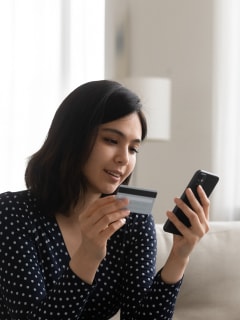CKYC Registry
-
Customer Service Contact us Service request Locate a branch
Find all the help you need
Scan the QR, get our app, and find help on your fingertips

Help CenterSupport topics, Contact us, FAQs and more
-
Login
Are you ready for an upgrade?
Login to the new experience with best features and services
-
Login
Are you ready for an upgrade?
Login to the new experience with best features and services
- Accounts
-
Deposits
IDFC FIRST Bank Deposits
View all Deposits -
Loans
IDFC FIRST Bank Loans
View all Loans - Wealth & Insure
-
Payments
IDFC FIRST Bank Payments
View all Payments -
Cards
IDFC FIRST Bank Cards
View all Cards - Blogs
- Corporate Account
-
Cash Management Services
IDFC FIRST Bank Cash Management Services
View all Cash Management Services - Supply Chain Finance
-
Corporate Lending
IDFC FIRST Bank Lending
View all -
Treasury
IDFC FIRST Bank Treasury
See more details - NBFC Financing
Support topics, Contact us, FAQs and more
- IDFC FIRST Bank Accounts
-
Savings Account
-
Corporate Salary
Account -
Senior Citizens
Savings Account -
First Power
Account -
Current Account
-
NRI Savings
Account -
TASC Institutional
Account -
Savings Account
Interest Calculator
- IDFC FIRST Bank Deposits
-
Fixed Deposit
-
Recurring Deposit
-
NRI Fixed Deposit
-
Safe Deposit Locker
-
FD Calculator
-
RD Calculator
- IDFC FIRST Bank Loans
-
Personal Loan
-
Consumer Durable
Loan -
Home Loan
-
Business Loan
-
Professional Loan
-
Education Loan
-
New Car Loan
-
Pre-owned Car Loan
-
Two Wheeler Loan
-
Pre-owned Two
Wheeler Loan -
Commercial Vehicle
Loan -
Gold Loan
-
Loan Against Property
-
Loan Against Securities
-
Easy Buy EMI card
-
Personal Loan
EMI Calculator -
Education Loan
EMI Calculator -
Home Loan
EMI Calculator
- IDFC FIRST Bank Wealth & Insure
-
FIRST Select
-
FIRST Wealth
-
FIRST Private
-
Mutual Funds
-
Sovereign Gold Bond
-
Demat Account
-
Term Insurance
-
Life Insurance
-
Health Insurance
-
General Insurance
-
Bonds
-
Loan Against
Securities -
Portfolio Management
Service
- IDFC FIRST Bank Payments
-
FASTag
-
Credit Card
Bill Payments -
UPI
-
Funds Transfer
-
Forex Services
-
Pay Loan EMI
- IDFC FIRST Bank Cards
-
Ashva :
Metal Credit Card -
Mayura :
Metal Credit Card -
FIRST Millennia
Credit Card -
FIRST Classic
Credit Card -
FIRST Select
Credit Card -
FIRST Wealth
Credit Card -
FIRST WOW!
Credit Card -
Deals
-
Debit Cards
-
Co-branded Cards
-
Credit Card
EMI Calculator -
FIRST Corporate
Credit Card -
FIRST Purchase
Credit Card -
FIRST Business
Credit Card
- Premium Metal Credit Cards
-
AshvaLifestyle1% Forex₹2,999
-
MayuraLifestyleZero Forex₹5,999
-
FIRST PrivateInvite Only
- Best for travellers
-
MayuraZero ForexMetal₹5,999
-
Ashva1% ForexMetal₹2,999
-
FIRST WOW!Zero ForexTravelLifetime Free
-
FIRST SWYPTravel OffersEMI₹499
-
FIRST Select1.99% ForexLifestyleLifetime Free
-
FIRST Wealth1.5% ForexLifestyleLifetime Free
-
Club VistaraTravelLifestyle₹4,999
-
IndiGo IDFC FIRST Dual Credit CardTravelLifestyle₹4,999
- Max benefits, Free for life
-
FIRST Classic10X RewardsShoppingNever Expiring Rewards
-
FIRST Millennia10X RewardsShoppingNever Expiring Rewards
-
FIRST Select10X RewardsLifestyle1.99% Forex
-
FIRST Wealth10X RewardsLifestyle1.5% Forex
-
FIRST WOW!RewardsTravelZero Forex
-
LIC ClassicRewardsInsuranceShopping
-
LIC SelectRewardsInsuranceShopping
- Reward Multipliers
-
AshvaLifestyleMetal₹2,999
-
MayuraLifestyleZero Forex₹5,999
-
FIRST ClassicNever Expiring RewardsShoppingLifetime Free
-
FIRST MillenniaNever Expiring RewardsShoppingLifetime Free
-
FIRST SelectNever Expiring RewardsLifestyleLifetime Free
-
FIRST WealthNever Expiring RewardsLifestyleLifetime Free
- Rewards & Credit on UPI
-
FIRST Power+FuelUPI₹499
-
FIRST PowerFuelUPI₹199
-
FIRST EA₹NVirtual1% Cashback₹499
-
FIRST DigitalVirtualUPI₹199
-
IndiGo IDFC FIRST Dual Credit CardUPITravelDual cards
- Fuel and Savings
-
FIRST PowerRewardsUPI₹199
-
FIRST Power+RewardsUPI₹499
-
LIC ClassicRewardsInsuranceShopping
-
LIC SelectRewardsInsuranceShopping
- Express and Flaunt
-
AshvaMetal1% Forex₹2,999
-
MayuraMetalZero Forex₹5,999
-
FIRST SWYPEMIOfferMAX₹499
-
FIRST MillenniaRewardsShoppingLifetime Free
- FD Backed rewarding Credit Cards for all
-
FIRST EA₹NVirtualCashback₹499
-
FIRST WOW!Zero ForexTravelLifetime Free
-
CreditPro Balance TransferTransfer & SaveReduce InterestPay Smartly
- IDFC FIRST Bank NRI Forex Solutions
-
Send money to India-Wire transfer
-
Send money to India-Digitally
-
Send money abroad
-
Max Returns FD (INR)
- IDFC FIRST Bank MSME Accounts
-
Platinum Current
Account -
Gold
Current Account -
Silver Plus
Current Account -
Merchant Multiplier
Account -
Agri Multiplier
Account -
TASC Institutional
Account -
Dynamic Current
Account -
World business
Account -
First Startup
Current Account
- IDFC FIRST Bank Business Loans
-
Business Loan
-
Professional Loan
-
Loan Against Property
-
Business Loan for Women
-
Working Capital Loan
-
Construction Equipment Loan
-
Machinery Loan
-
Healthcare Equipment Loan
- IDFC FIRST Bank Business Solutions
-
Payment Solutions
-
Tax Payments
-
Doorstep Banking
-
Point of Sale (POS)
-
Escrow Accounts
-
NACH
-
Payment Gateway
-
UPI
-
Virtual Accounts
-
As per amendment in the Income Tax Rules, PAN or Aadhaar are to be mandatorily quoted for cash deposit or withdrawal aggregating to Rupees twenty lakhs or more in a FY. Please update your PAN or Aadhaar. Kindly reach out to the Bank’s contact center on 1800 10 888 or visit the nearest IDFC FIRST Bank branch for further queries.
-
-
Most Searched
Sorry!
We couldn’t find ‘’ in our website
Here is what you can do :
- Try checking the spelling and search
- Search from below suggestions instead
- Widen your search & try a more generic keyword
Suggested
Get a Credit Card
Enjoy Zero Charges on All Commonly Used Savings Account Services
Open Account Now
Credit Card
What is a contactless payment - How it works and its advantages
Key Takeaways
‘Contactless payments’ are digital payments made using a contactless card that uses RFID technology.
You can make contactless payments directly through your credit card or by linking it to your bank’s mobile banking app.
Some of the key benefits of using contactless credit cards include high security, instant transactions, and all-time accessibility.
Digital modes of payment like contactless payments are increasingly becoming commonplace in India. Quick and secure contactless payments are the result of an evolution of online modes of transfers over the years. Some of the popular modes of online transfers include payments via banking cards (debit and credit cards), USSD (unstructured supplementary service) payments, AEPS (Aadhaar-enabled payment system), UPI (unified payments interface) payments, and payments through mobile wallets.
Contactless payments are the most evolved of all modes of online transfers since they are extremely fast, highly secure, and require no physical contact between the sender and the recipient. Customers can use a contactless credit card to make contactless payments.
READ MORE
What is a contactless payment?
A contactless payment (using credit card) is made when a customer taps their credit card or phone on (over) a credit card reader. The card reader or terminal then communicates with the bank to make the payment towards the merchant. Credit card companies use RFID (radio frequency identification) technology to help customers make contactless payments using their credit card. Customers can also use their mobile banking apps (linked to their credit cards) to make a contactless payment.
All IDFC FIRST Bank credit cards come with contactless payment options that can be activated or deactivated via the mobile app. You also get a digital card option with IDFC FIRST Bank’s FIRST SWYP credit card that is issued instantly after approval. This EMI credit card comes with a with a fixed monthly conversion fee without any interest charges on various EMI-eligible purchases, making it one of most affordable credit card options for your everyday expenses. With this card, you also enjoy various reward benefits and offers on travel, food delivery, and online shopping.
How does a contactless payment work?
One can understand how contactless payments work by knowing the procedure to be followed to make such transactions. Here are the steps that a customer must follow to make a contactless payment –
- Signing up for a contactless credit card: Contactless credit cards come with various benefits of which the primary benefit is the ability to make online transfers without any physical contact with the recipient. These cards also offer better operational efficiency for businesses. As the first step, one must sign up for a contactless credit card.
- Linking one’s contactless credit card to a mobile banking app: Next, the customer should link their contactless credit card to a mobile banking app. They can also directly use their credit card for payments if they wish to do so.
- Waving or tapping the card to make the payment: Finally, once a customer’s contactless credit card is active, they can tap or wave the card over a credit card reader to make their payment.
Types of contactless payments
There are two main categories of contactless payments using credit cards in India –
- Contactless payments using mobile wallets: A customer can link their contactless credit card to a mobile wallet or a bank’s mobile banking app and make a contactless payment. Mobile wallets like Google Pay support contactless payments. Mobile wallets are the most convenient mode of making a contactless payment. While choosing a mobile banking service to make contactless payments, customers must assess accessibility to customer services and the security of online transfers.
- Contactless payments using credit cards: Customers can also make contactless payments directly through their credit cards provided that the credit card be a contactless credit card. Customers must analyse the features of various contactless credit cards online and compare those features before choosing their card. Banks offer various attractive offers on contactless credit cards. One must check the relevance of these offers too before choosing their contactless credit card.
What is a contactless transaction in credit cards?
Credit card companies and banks use NFC (near-field communication) technology to help their customers make contactless payments. Customers can make contactless payments using their credit cards in two ways – using the credit card or using a mobile wallet linked to the credit card. Once their credit card is active, they must simply tap or wave their card over a card reader to make the payment. If they wish to use their mobile app wallet, they must do exactly the same thing using their mobile app or wallet.
How do contactless cards work?
Here is how transactions are made using contactless credit cards –
- When a customer taps a contactless credit card on a merchant’s credit card terminal, the terminal generates a unique code to initiate the transaction.
- The card reader transmits the data to a card processing network (e.g. - VISA or Mastercard).
- The network checks the data for any possible fraud and if everything is verified, forwards the request to the card issuer (the bank).
- The bank checks the available balance before authenticating the transaction. It also checks the possibility of the card being stolen or flags the card in case a purchase is being made from an unusual location.
- Once all validations are complete, the bank approves the contactless payment.
Benefits of contactless credit card payments
Here are the key benefits of contactless credit card payments: -
- Contactless credit card payments are extremely fast: UPI payments are now popular all over India thanks to their overall security and speed. Contactless credit card payments are just as fast, and they require no physical contact between the sender and recipient.
- Customers can benefit from increased security by opting for contactless payments: Contactless payments, besides being fast, are also extremely secure. They ensure that the customer’s data is not leaked at any stage of the payment process.
- Business owners benefit from better operational efficiency: Business owners can benefit from contactless payments in two important ways – they can streamline their cash flow and increase their number of customers. Contactless payments also have the added advantage of employing fewer employees to process payments.
- They protect customers from fraud: Contactless credit card payments also help customers avoid all forms of online fraud. These are secured and encrypted transactions that are highly secure that significantly reduce the chances of fraud.
- Contactless credit card payments are an extremely convenient mode of online transfers: Maintaining a contactless credit card is extremely convenient too. Customers need not keep their cards in their wallets and can manage these cards directly through their mobile banking apps or mobile wallets.
Misconceptions about contactless transactions
While contactless payments are secure, fast, and extremely reliable, customers must also be aware of the misconceptions surrounding them so as to not be swayed by misinformation. Here are four misconceptions about contactless transactions that you should know –
- Contactless payments are not secure: For every transaction made by a customer, a contactless credit card creates a one-time password which is sent to the customer. When a customer makes a contactless payment, their name, billing address, account number, or any other sensitive information is not shared with any stakeholder such as the credit card network or the bank. The one-time password prevents POS devices from skimming a customer’s credit card information, thereby keeping customers’ data safe.
- A customer’s data can be easily stolen while they make a contactless payment: The bank offering a contactless credit card and every other stakeholder involved in the process of helping a customer make a contactless payment does not receive access to any sensitive information.
- One can get charged an amount even while passing through a contactless payment terminal: Another widely held myth is that a contactless credit card terminal can simply deduct an amount from the account of a customer who is passing by it. Every contactless payment requires customers to authenticate the transaction before making the payment. Therefore, it is very unlikely that such an event might occur. It is advisable for all customers to store their contactless credit cards in wallets or cases to avoid such an occurrence.
- Individuals often get overcharged without even realising it: It is untrue that an individual who uses a contactless credit card can be charged multiple times without even realising it. Remember that the individual has to authorise any given payment for any amount to be deducted from their account.
Future of contactless payments
A few trends are set to shape the future of contactless payments in India –
- Increased adoption of contactless payments by business owners: Just as UPI’s meteoric rise revolutionised digital payments in the past few years, contactless payments will soon be accepted by more merchants and business owners.
- Contactless payments will soon be commonplace in rural India: These payments are likely to penetrate the rural Indian market. One could soon see people make contactless credit card payments in Tier II and III cities in India.
- Financial institutions and banks might collaborate with startups to create a more integrated payment environment: Banks, startups, technology companies, and governmental organisations might soon get together in multiple ways to make contactless payments more convenient and secure for customers in India.
Conclusion
Contactless payments, powered by advanced technologies like RFID and NFC, are transforming the way we transact. With IDFC FIRST Bank credit cards, you experience the convenience and security of contactless payments, making every transaction seamless and efficient. Whether tapping your card or using a mobile banking app, you can enjoy instant, secure payments with no physical contact. Embrace the future of digital payments with an IDFC FIRST Bank credit card, designed to enhance your payment experience while ensuring top-notch security.
Disclaimer
The contents of this article/infographic/picture/video are meant solely for information purposes. The contents are generic in nature and for informational purposes only. It is not a substitute for specific advice in your own circumstances. The information is subject to updation, completion, revision, verification and amendment and the same may change materially. The information is not intended for distribution or use by any person in any jurisdiction where such distribution or use would be contrary to law or regulation or would subject IDFC FIRST Bank or its affiliates to any licensing or registration requirements. IDFC FIRST Bank shall not be responsible for any direct/indirect loss or liability incurred by the reader for taking any financial decisions based on the contents and information mentioned. Please consult your financial advisor before making any financial decision.
The features, benefits and offers mentioned in the article are applicable as on the day of publication of this blog and is subject to change without notice. The contents herein are also subject to other product specific terms and conditions and any third party terms and conditions, as applicable. Please refer our website www.idfcfirstbank.com for latest updates.























